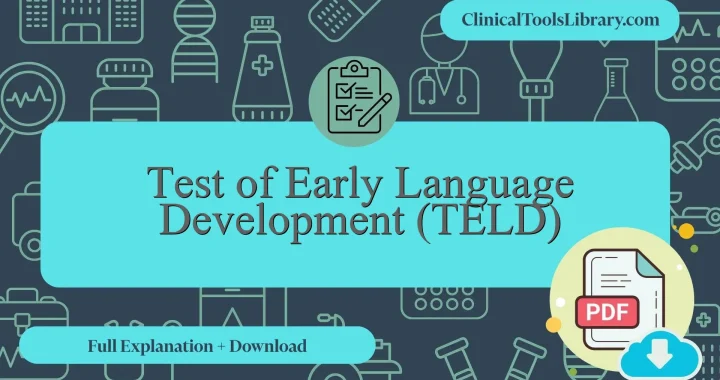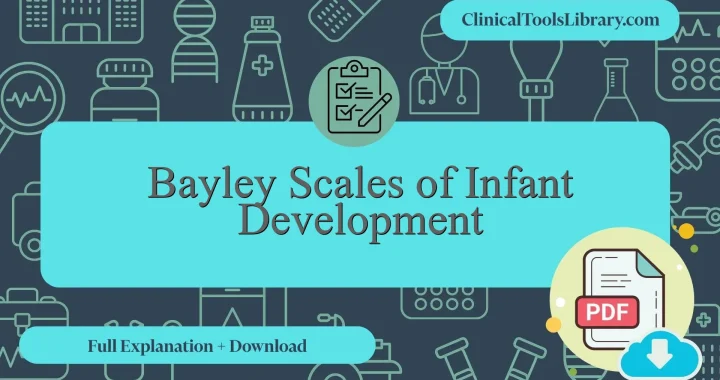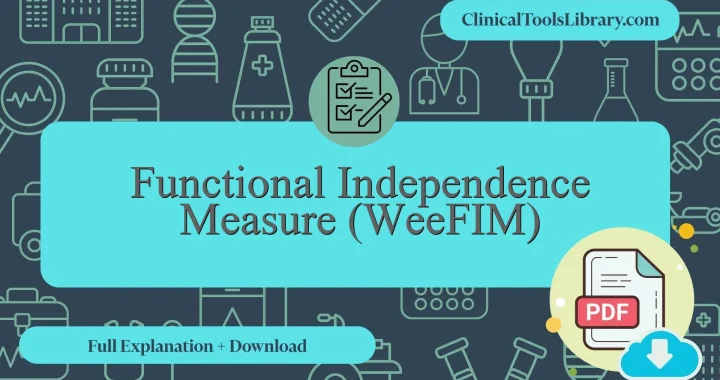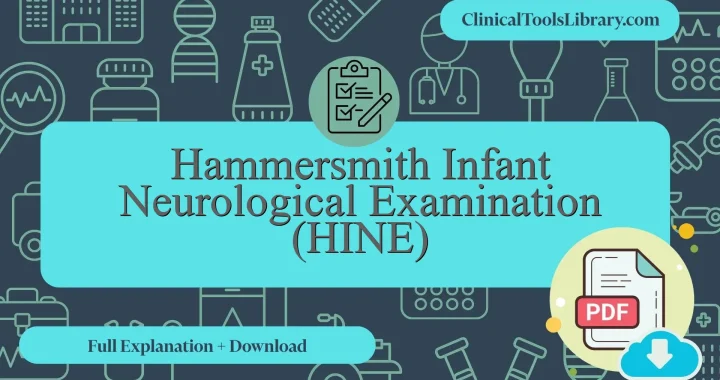In this article, we explain everything you need to know about the Test of Early Language Development (TELD). We will cover the aspects it evaluates, the target population, a detailed step-by-step explanation, and how to interpret its results. Additionally, we will dive into the scientific evidence supporting this tool (diagnostic sensitivity and specificity) in clinical assessment. You will also find official and unofficial sources available for download in PDF format.
What does the Test of Early Language Development (TELD) assess?
The Test of Early Language Development (TELD) is a standardized assessment tool designed to evaluate the language abilities of children from infancy through early childhood. It measures critical components such as receptive language, expressive language, and overall language development to identify potential delays or disorders. The primary purpose of the TELD is to assist clinicians and educators in diagnosing speech and language impairments and to guide intervention planning. The assessment’s structure allows for objective quantification of a child’s language skills, facilitating early detection and support. Reliable administration and scoring procedures make the Test of Early Language Development TELD a widely accepted instrument in pediatric speech-language pathology. Resources such as the Test of early language development teld pdf or Test of early language development teld free versions may be used for training or preparatory purposes but should be supplemented with professionally administered evaluations.
For which type of patients or populations is the Test of Early Language Development (TELD) intended?
The Test of Early Language Development (TELD) is primarily indicated for children aged 2 to 7 years who are suspected of having language delays, speech impairments, or communication disorders. It is most useful in clinical contexts where early identification of receptive and expressive language deficits is essential, including evaluations within pediatric speech-language pathology and developmental disability assessments. The TELD provides standardized measures that aid clinicians in differentiating between typical language variation and clinically significant impairment, facilitating targeted intervention planning. This tool is also valuable for monitoring progress in children diagnosed with conditions such as autism spectrum disorder or developmental language disorder, ensuring timely adjustments to therapeutic approaches. Access to the Test of early language development teld pdf or Test of early language development teld free materials, when available, supports practitioners in consistent administration and scoring.
Step-by-Step Explanation of the Test of Early Language Development (TELD)
The Test of Early Language Development (TELD) is administered by first presenting the child with a series of 66 items designed to assess various facets of spoken language. The evaluation encompasses both receptive and expressive language skills through questions that require the child to identify objects, follow directions, and formulate responses. Items include a mix of picture identification, verbal imitation, and spontaneous language production. Responses are scored using a standardized format, typically categorizing answers as correct or incorrect, with some items allowing for partial credit based on the accuracy and completeness of the response. The administration time averages 20 to 30 minutes, and the test is suitable for children aged 2 to 7 years. The structured approach ensures objective measurement of early language competencies critical for identifying language delays or disorders.
Downloadable Test of Early Language Development (TELD) PDF Resources for Clinicians & Educators
Downloadable resources for the Test of Early Language Development (TELD) are provided below in both the original and English versions, available in PDF format. These materials support clinicians and educators in assessing early language skills efficiently and accurately. Access to the Test of Early Language Development TELD PDF facilitates comprehensive evaluation, ensuring evidence-based decision-making in pediatric language development monitoring.
How to interpret the results of the Test of Early Language Development (TELD)?
The interpretation of the Test of Early Language Development (TELD) results involves comparing the obtained raw scores to established normative reference ranges, typically presented as standard scores with a mean of 100 and a standard deviation of 15. Scores between 85 and 115 are generally considered within the average range, while scores below 85 may indicate language delay or receptive-expressive language disorders. To quantify the degree of deviation, healthcare professionals can calculate a z-score using the formula: z = (raw score – mean) / standard deviation. For example, a standard score of 70 corresponds to a z-score of -2, suggesting significant concern requiring further evaluation or intervention. Practically, these results guide clinicians in identifying children who may benefit from speech-language pathology services and inform the development of targeted therapeutic plans, ensuring early and effective management of communication impairments.
What scientific evidence supports the Test of Early Language Development (TELD) ?
The Test of Early Language Development (TELD), originally developed by Kenneth E. Hammill and Sheila A. Newcomer in the early 1980s, has undergone extensive validation to ensure its reliability and clinical utility. Normative data were collected from a representative sample of children aged 2 to 7 years, reflecting diverse geographic and socioeconomic backgrounds, which supports its generalizability. Psychometric analyses demonstrate strong internal consistency, test-retest reliability, and inter-rater reliability. Convergent validity is established through significant correlations with other standardized language assessments. The TELD is widely utilized in identifying language delays associated with developmental disorders such as speech-language impairment, autism spectrum disorder, and specific language impairment, providing valuable diagnostic information. Its empirical foundation and iterative revisions have maintained its status as a robust tool for early language screening and intervention planning.
Diagnostic Accuracy: Sensitivity and Specificity of the Test of Early Language Development (TELD)
The Test of Early Language Development (TELD) demonstrates a sensitivity range of approximately 80% to 90% in identifying children with language delays, indicating its effectiveness in correctly detecting affected individuals. Specificity values reported in the literature vary between 85% and 95%, reflecting its accuracy in excluding children without language impairments. These metrics support the TELD’s utility as a reliable screening tool in early childhood assessments, although results should be interpreted alongside comprehensive clinical evaluations to ensure diagnostic accuracy.
Related Scales or Questionnaires
The Preschool Language Scale (PLS), Clinical Evaluation of Language Fundamentals (CELF), and Peabody Picture Vocabulary Test (PPVT) are among the assessments most similar to the Test of Early Language Development (TELD). Each tool offers specific advantages; for instance, the PLS provides a comprehensive assessment of both expressive and receptive language skills, while the CELF is widely used for identifying language disorders in older children. The PPVT focuses on vocabulary and is less time-consuming, but may not capture broader language abilities. Disadvantages include the CELF’s less suitability for very young children and the PPVT’s limited scope regarding syntax and morphology. These scales and questionnaires, along with details on the Test of early language development teld pdf and Test of early language development teld free versions, are fully explained and available for download on ClinicalToolsLibrary.com, supporting clinicians assessing conditions such as developmental language disorder and speech delays.




